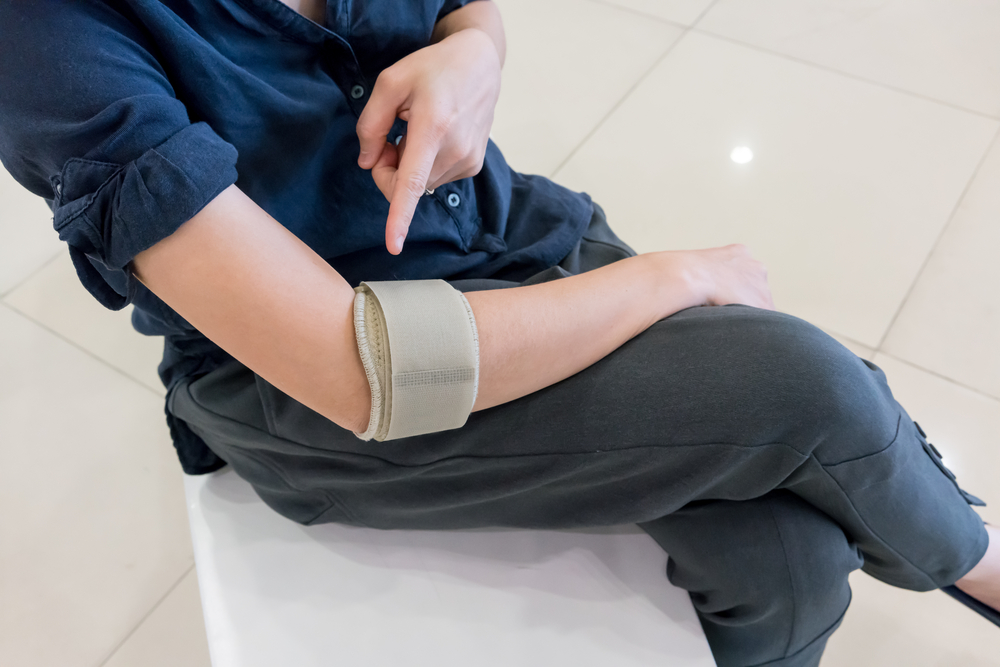If you’re experiencing tennis elbow, you might find relief using a tennis elbow strap. These straps can be an effective tool to alleviate pain, though they don’t work for everyone. Here’s a comprehensive guide to help you understand how to properly fit a tennis elbow strap and determine if it’s the right solution for you.
What is Tennis Elbow?
Tennis elbow, or lateral epicondylitis, is a condition caused by overuse of the forearm muscles, leading to pain around outer aspect of the elbow. It can result from repetitive activities such as tennis, hence the name, but it is more often caused by other repetitive activities.
How to Fit a Tennis Elbow Strap
- Choose the Right Strap: Various tennis elbow straps are available in the market. At North 49, we have some in stock and local pharmacies also carry different brands. If one doesn’t work, you can try another.
- Position the Strap Correctly: The key to effectiveness is proper placement. Here’s how to find the right spot:
- Place the Strap Below the Sore Spot: Position the strap just below the sore spot. Some suggest placing it two fingers’ width below the bend in the elbow. Others recommend a thumb’s width below the sore area.
- Adjust the Position: Move the strap up and down your forearm slightly to find the most comfortable position that reduces the pain (see #4 below).
- Tighten the Strap Appropriately: The strap should be snug but not too tight. It should apply pressure without cutting off circulation or causing discomfort.
- Test the Strap: Once the strap is in place, test it by performing activities that usually cause pain, such as gripping an object. If the pain is reduced, the strap is likely in the correct position. If not, adjust the position and how tight it is, then try again. If you still cannot find that just right spot, try another strap. If that does not help, talk to your local physiotherapist.
When to Use a Tennis Elbow Strap
A tennis elbow strap is most beneficial during the acute phase of your condition when you need immediate pain relief. However, it’s not a cure-all solution and should be part of a comprehensive treatment plan.
Comprehensive Treatment Approach
Using a tennis elbow strap should be complemented with seeing a physiotherapist to confirm if you have tennis elbow, assess your ergonomics, and identify the techniques causing the condition. In addition to that they can provide:
- Exercise: Specific exercises that can aid the recovery process.
- Manual Therapy: Hands-on therapy to address underlying issues.
When Not to Use a Tennis Elbow Strap
While straps can be helpful, they are not suitable for everyone. If the strap causes increased pain, discomfort, or if you have an underlying condition that could be exacerbated by compression, it’s best to avoid using it and seek professional advice.
Additional Resources
For more detailed information on tennis elbow and how it compares to golfer’s elbow, check out our previous post HERE.
Need Help?
If you have questions about fitting a strap or dealing with ongoing elbow pain, don’t hesitate to book an Initial Assessment with one of our physiotherapists. Call us at 306-343-7776 or schedule an appointment through our website.
Remember, while a tennis elbow strap can provide relief, it’s essential to address the root cause of your pain for long-term recovery.

